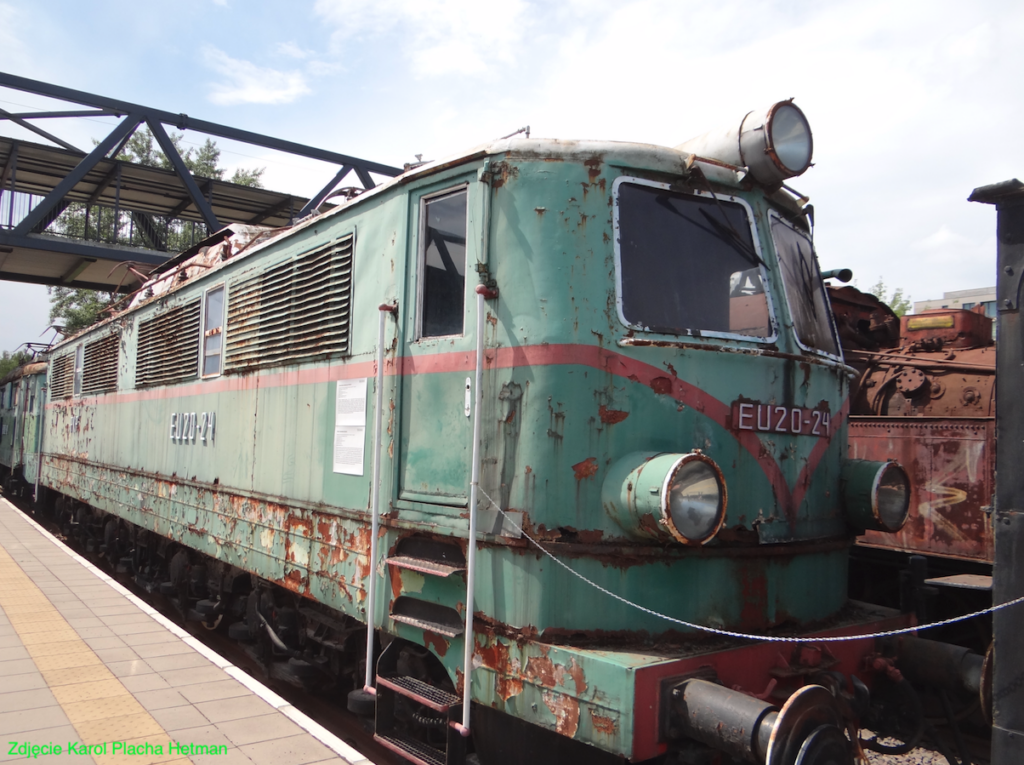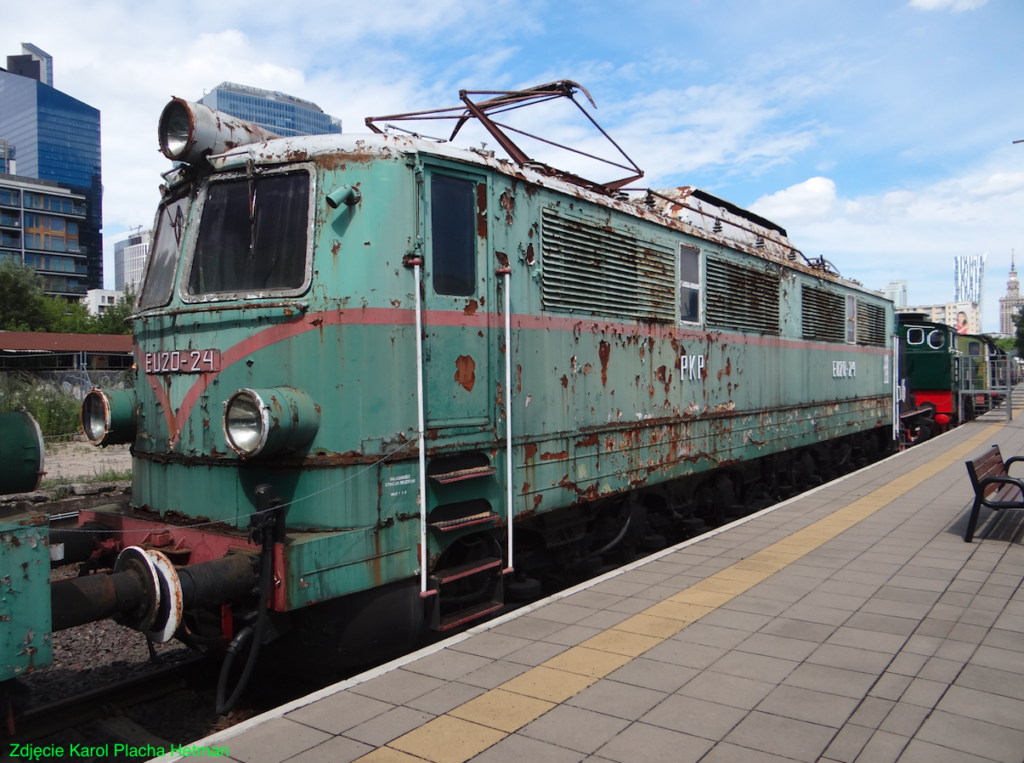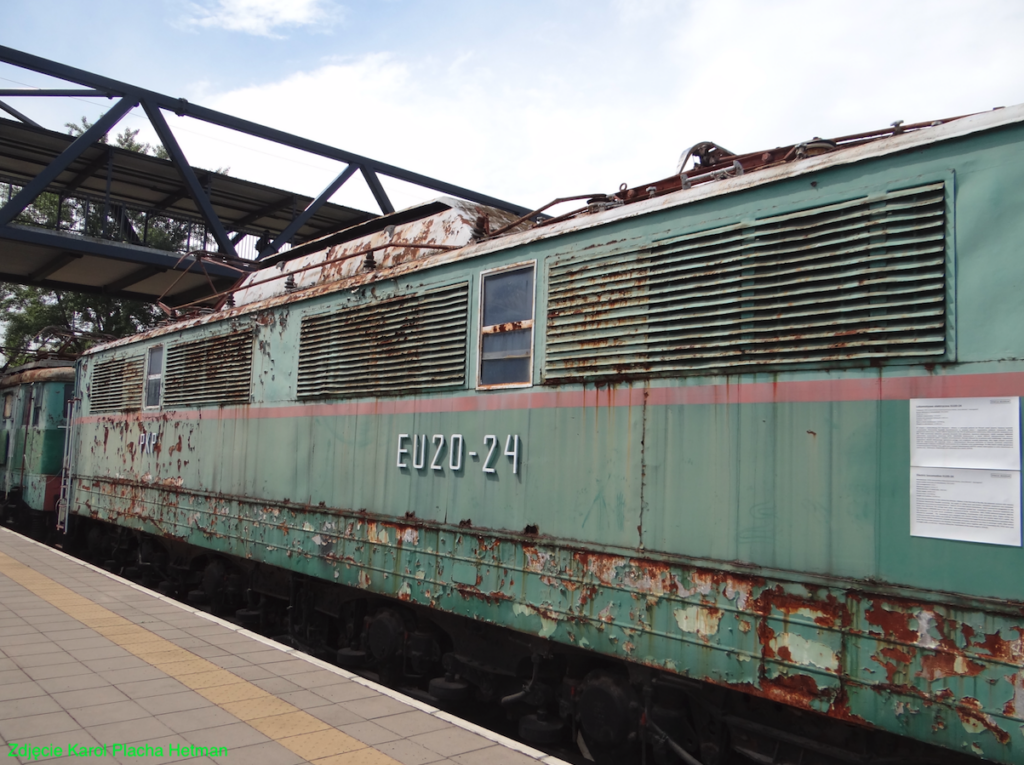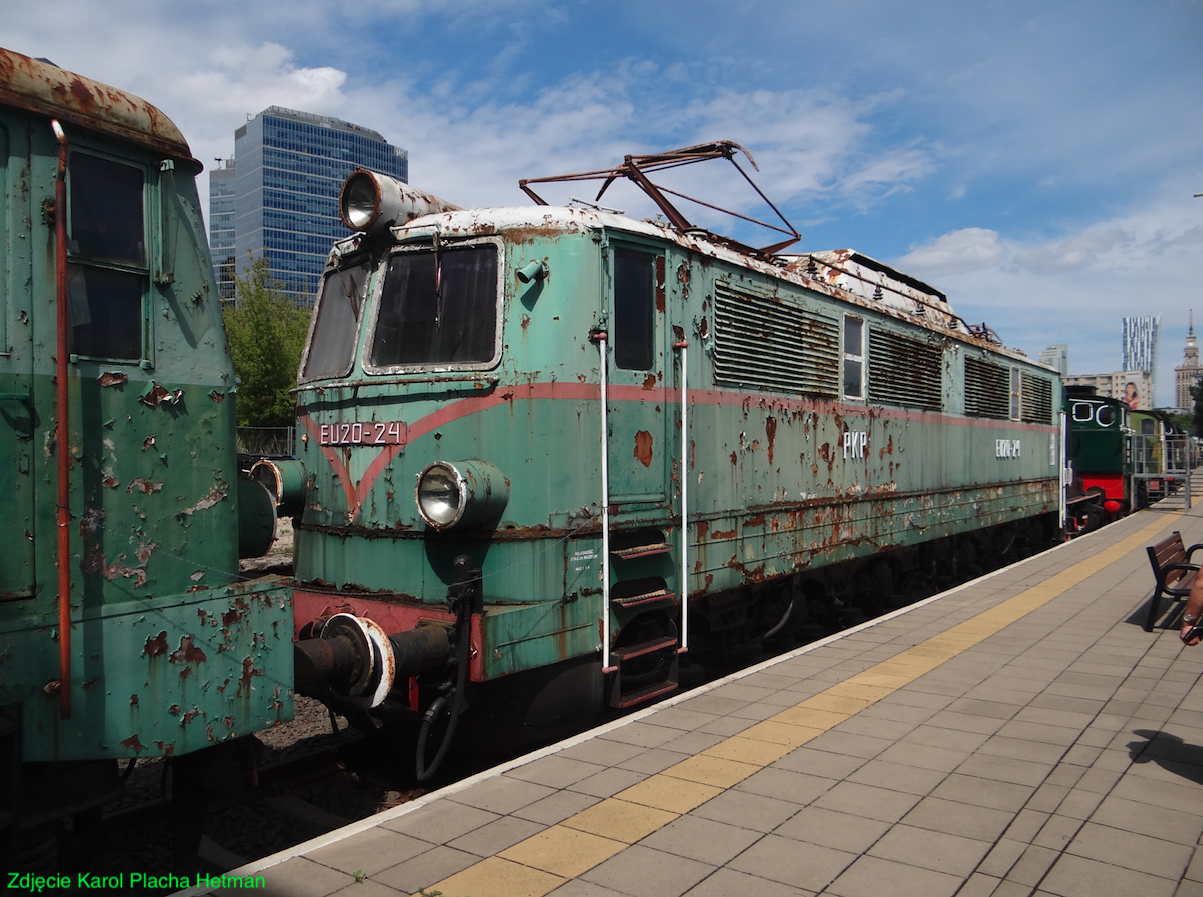Warszawa 10-06-2024
Electric Locomotives E05/EU20. 2024



In the first years of the existence of the People’s Republic of Poland, communists tried to block the cooperation of PKP and the Polish Railway Industry with Great Britain and Sweden. They destroyed the memory of the electrification of Polish Railway Routes in the 1930s. However, the communists agreed to cooperate with Hungary (Ganz-MÁVAG company) and the GDR (LEW Hennigsdorf factory). Cooperation with the GDR was carried out under pressure from Moscow. In Poland, it was decided to electrify Polish Railway Routes with 3 kV DC traction. The first priority was the electrification of the Warsaw – Katowice – Gliwice route. Therefore, a large contract was signed with the GDR industry for the supply of rolling stock and equipment for traction substations. The Germans offered PKP electric locomotives E04 (Polish designation) Bo’Bo’ axle system and E05 (Polish designation) Co’Co’ axle system.
In 1950, talks were initiated with representatives of the LEW Lokomotivbau – Elektrotechnische Werke and Hans Beimler Hennigsdorf plants in Hennigsdorf regarding the purchase of electric locomotives and electric multiple units. Initially, the E04 electric locomotive received the E200 series designation. But only the first two locomotives had this designation; E201 and E202. Then the series designation was changed to E04 (numbers E04-1 to E04-25). 25 E04 locomotives were built, and deliveries to PKP lasted until 1960, although the main deliveries lasted in the period 1952-1954.
T-T data of the EU04 series locomotive:
Bo’Bo’ axle system. Service weight 86,000 kg. Total length 16.32 m. Wheel diameter 1.35 m. Type of electric motors GBM 530. Number of motors 4 pieces, one per axle. The GMB 530 traction engine had a continuous power of 420 kW and an hourly power of 530 kW. Continuous power 1,680 kW. Hourly power 2,120 kW. The gear with a gear ratio of 81:21 has helical teeth. Design speed 110 km/h. Knorr brake system. A device – Czuwak – was installed in the locomotive.
Locomotives of the E05/EU20 series.
In the period 1955-1958, 34 locomotives of the E05 series were delivered to PKP. Then the series designation was changed to EU20. The locomotive body is similar to the E04 locomotive, made of steel, partially streamlined and completely welded. Both locomotives have an identical arrangement of windows, ventilation grilles, entrance doors and grooves on the lower plates. Locomotives vary in length; E04 – 16.32 m, EU20 – 18.50 m. Both locomotives differ in the number of axles and the number of drive engines. GBM 530 traction engines were used, each with a continuous power of 420 kW and an hourly power of 530 kW. The electrical equipment is also similar. The converters and compressors were the same. The main circuit was protected by a quick switch with a pneumatic drive. Timing was done using a kulak shaft. The locomotives are equipped with an electric train heating circuit and a passive deadman device. The E05 series locomotive had universal characteristics that allowed these locomotives to be used in passenger traffic.
E05 series electric locomotives began service in the Warszawa Zachodnia locomotive depot in Ochota. The locomotives were sent to freight depots on the Warsaw – Silesia route. The locomotives operated hard coal trains. The locomotives were never connected because they did not have multiple controls. In the mid-1960s, all locomotives were collected in the Piotrków Trybunalski locomotive depot, where, together with the new 3E/ET21 series locomotives, they were used in freight traffic on the Łazy – Warsaw route. The operation of the E05/EU20 series ended in the period 1979-1981.
The E05/EU20 series locomotives were quite unreliable vehicles. Failures of starting resistors often occurred because they did not have additional cooling as in other locomotives.
EU20-24 locomotive.
The EU20-24 locomotive was produced in 1957. Serial number 7817/1957. In 1981, the locomotive was withdrawn from service. In 1984, the locomotive was prepared for exhibition at the Railway Museum in Warsaw, which was transformed into the “Station Museum”. It is the only preserved locomotive of the E05/EU20 series.
T-T data of the E05/EU20 series locomotive:
Co’Co’ axis system. Maximum speed 110 km/h. GMB 530 engines, 6 pieces. Continuous power 2,520 kW. Gear 81:21. Locomotive service weight 120,000 kg. Length 18.50 m. Width 3.05 m. Wheel diameter 1.35 m. Knorr brake system. No multiple control.
Factory LEW Lokomotivbau – Elektrotechnische Werke and Hans Beimler Hennigsdorf.
VEB Lokomotivbau-Elektrotechnische Werke “Hans Beimler” Hennigsdorf (State Electric Locomotive Factory named after Hans Beimler in Hennigsdorf, also LEW Hennigsdorf, LEW) is a German manufacturer of railway rolling stock existing in the period 1947–1992. The headquarters and main factories of the plant were located in Hennigsdorf, a suburb of Berlin. The rail vehicle factory was founded in 1910 by the AEG concern. The production of locomotives began in 1913. In the 1930s, the plant passed into the hands of August Borsig, changing its name to Borsig Lokomotiv Werke GmbH. Borsig steam locomotives were produced until 1944. After the end of World War II, the plants were nationalized, and the main products of the plants were electric locomotives for the GDR and the countries of the former communist bloc. It was then that the Lokomotivbau Elektrotechnische Werke (LEW) company was established. After the unification of the Germans in 1990, the factory returned to the AEG concern, transforming into AEG Schienenfahrzeuge GmbH. In 1996, as a result of the merger of ABB and Daimler AG, Adtranz was created, which was sold to the Canadian company Bombardier 5 years later. Already during Adtranz, the production of locomotives was ended and the assembly of electric and diesel multiple units began.
Written by Karol Placha Hetman
